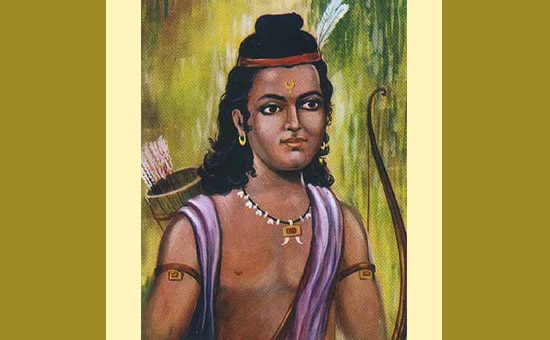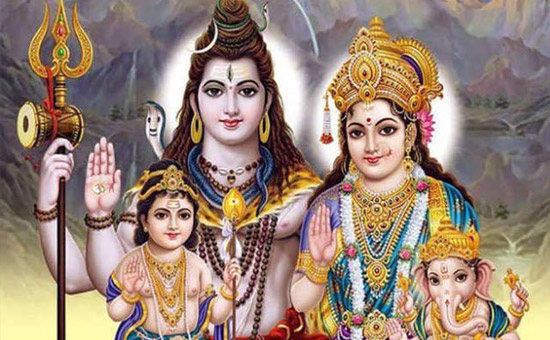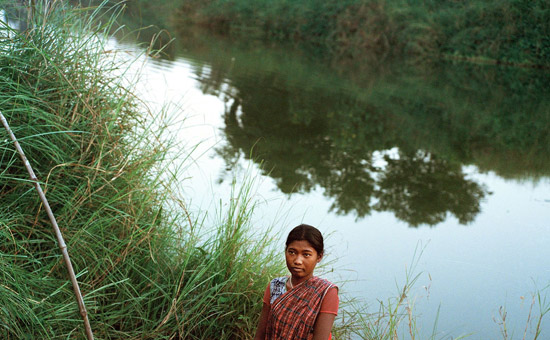Part One covered Guru, significance of
Ganga Saptami and Sambaji Maharaj and son of Shivaji. Part Two covered Mohini Avatar, Tiger
stories Ayyappa and Mother’s Day. Part Three tells you stories of Kamadhenu,
Sita Navami and Narasimha Jayanti. Part Four is about Buddha Purnima,
Athithi Devo Bhava and Tenzing Norgay. Part Five is about destiny-how karmas can
alter it, animal sacrifice and the power of surrender. Part Six
covers do not Wait for tomorrow, The Strange Prophecy and Know the Value of
Money. Part Seven
covers Ravana & Ma Kali, Naama-Japa and Gratitude. Part Eight
covers This Too Shall Pass, Child Freedom Fighters and Ekalavya. Part Nine
covers God proposes and disposes, stories of the brave Jassa Singh Ahulwalia
and Ganga Dussehra. Part Ten
covers Keechaka Vadh, why Tirupati Balaji is called Govinda and Sword of
Shivaji Maharaj.
This part covers concentration, parents
are our world and Ayachi Mishra.
Why did I start writing these Stories?
As a mother of three I have realized that
many children are deprived of hearing tales that are Indian in origin. This
could be for various reasons, an important one being that parents themselves do
not know these tales.
The desire to learn English and about
Western Nations meant that atleast two generations were fed tales from the West
namely Sleeping Beauty, Cinderella, etc. Because of this when you ask a child
to write an essay of their favourite character they will write about Santa
Claus and Snow White but not Shivaji.
So I took it upon myself to write short
stories about India’s cultural heritage. The stories have been written in such
a way that they can be read to children. At the same time I added snippets of
our culture, rituals, shlokas, food, etc. so that children get to know about
them. Must add that these stories are not meant to be scholarly pieces of work.
 Eklavya became a master archer due to power of concentration.
Eklavya became a master archer due to power of concentration.
Concentration
The Pandavas and Kauravas learnt at the
feet of Dronacharya, their teacher. The subjects were Statecraft, Sciences,
Maths, use of weapons like the mace, bow and arrow, spear amongst others,
Cooking, Shlokas and so much more.
Then students had to learn the 64 kalas to become a cultured person, an
Arya. Even girl students would learn it all. That is how we had princess and
queens being so adept in warfare and statecraft. You would be interested in
knowing that Bheema was a very good cook!
One day Dronacharya wanted to test his
students for concentration. He took all the Pandavas and Kauravas to an orchard
where there were parrots. There, he told the princes to take their bow and
arrows and make any parrot their target. All the children were eager to please
their teacher. All of them did it immediately and were ready to shoot an arrow.
Then Dronacharya asked Duryodhan, “What do
you see?” Duryodhan said, “I see the trees, the birds and the sky.” Next,
Dronacharya asked Bheema, “What do you see?” Bheema said, “I can see the entire
flock of birds on the tree.”
Then Dronacharya asked Arjuna, “What do
you see?” Arjuna, who had pulled the string of the bow, with the arrow on mark,
said, “I can see the eye of the parrot.”
Dronacharya said, “Only Arjuna’s arrow
will find its mark. Do you know why?” He then continued, “When you have a task to achieve, you should concentrate
only on the task. Looking at all other things accompanying the task is a
hindrance. Focus on the task, have full concentration on the work to be done.”
There are two Yoga asanas for those who
wish to improve their power of concentration.
Surya Namaskar. This is even more useful
if done in an open environment, facing the Sun.
Tratakasan. In this asana, a lit candle is
kept in front of the student and the student has to gaze the lit candle for
atleast 2 minutes. People using spectacles are not supposed to do this asana.
Another way to do this asana is to gaze at the Sun within one hour of Sun-rise
or within one hour before Sun-set. One should not gaze for more than one minute.
After that, do rub your palms and cup your eyes for relief.
 Shiva, Parvati, Ganesha and Kartikeya.
Shiva, Parvati, Ganesha and Kartikeya.
Parents are OUR WORLD
Once, Kartikeya and Ganesha were with
their parents Shiva and Parvati. They were full of happiness and the
surrounding Nature and the Shiva-Ganas were all enjoying discussions about
their various ‘leelas’. Just then, Narad Muni appeared with a special Mango. He
said that anyone who ate the mango would be blessed with eternal knowledge and
wisdom.
Now, both Ganesha and Kartikeya wanted the
fruit. But Narad Muni said that there was a condition to eating the fruit,
“Only one person can eat the fruit. It cannot be divided and shared.” Both,
Shiva and Mata Parvati were in a quandary … how could they be partial to only
one of their children? What could they do?
Mahadeva looked at Narad Muni and with a
naughty glint in His eye, said, “Narada, you only decide who should eat the
fruit.” Now Narad was stuck. But being the brilliant person he was, he said, “I
suggest a race … whoever circles the Earth three times over will win this
mango.”
Barely had he said this when Kartikeya
jumped on His vahana, the peacock, and flew around the world. He wanted that
fruit! One round was almost over and though He looked over his back, he
couldn’t see Ganesha. He was wondering what happened to Him.
In the meantime, Ganesha took a look at
his small, little mouse and wondered how he could cover the span of the earth
faster than Kartikeya. He then looked at His parents Shiva and Parvati. They
were both smiling at Him, very encouragingly. He got an idea.
By this time Kartikeya had finished his
second round and He looked down upon Ganesha and said, “Hey Gappu, don’t you
want to even compete with me?” Saying this, He went ahead. Now Ganesha
smilingly went over to His parents, bowed down to Them and started taking a
Pradakshina (circumambulation) around Them. One, Two and Three Pradakshina.
Then He bowed down to Them again.
Shiva asked Him, “What have you done son?”
Ganapati replied, “Mata, Pita (Mother and Father)
are the World, nay, the entire Universe, to their children. By circling
around You, I have circled the world.”
Narad Muni was so happy to hear these
words that he hugged little Ganapati and said, “You are worth this mango and
more. Actually You are already the treasure house of wisdom and knowledge.”
While Lambodara was eating the mango,
Subramanya reached after finishing the third round around the Earth. He was
very upset and said, “I actually went round the Earth and the prize is given to
Balachandra? Why?” Parvati put Skanda on Her lap and explained to Him why
Ekdanta got the prize.
“Jagatah
Pitrau Vande Parvati Parameshwaro”
 Pond of the Chamaar lady in Bihar.
Pond of the Chamaar lady in Bihar.
Ayachi Mishra
One of the ultimate desires of a true
Bharatiya is to become Desireless, to attain Detachment (Vairagya) to material
pleasures. Today’s story is from Mithila Pradesh and is about a man who was a
great Sanskrit Scholar and was a man who never asked for anything. It is
believed that he only ate ‘saag’
(leafy vegetable) grown on his small patch of land. He was Bhavanatha Mishra,
also known as Ayachi Mishra. The name Ayachi in Sanskrit means “he who does not
ask for anything”.
Ayachi Mishra lived a life of penury. Ayachi
Mishra and his wife had no children and they prayed to Mahadev for a son. His
wife and his prayers were answered when Mahadev Himself was born to him. The
couple named him as Shankar.
Those days, the cobbler’s wife would be the
midwife during delivery. But the Mishra couple was so poor that they had
nothing to give the cobbler’s wife for her services. So Ayachi Mishra promised
her that his son Shankar Mishra would gift his first income to her.
Shankar Mishra was a prodigy. When he was
five years old, he had already mastered all knowledge. His fame spread and he
was invited by the king of Darbhanga to his court. There he was asked to recite
something of his own. He immediately recited,
“Baaloham jagdanand,
na me baala Saraswati
Apurne panchame varshe,
varnayami jagatrayam”
(“O the world’s delight, I am a child, my
Saraswati (learning) is not.
I have not completed five years, [and] I
describe the three worlds.”)
The king of Darbhanga was so pleased with
the prodigy that he rewarded him handsomely. He told little Shankar Mishra to
take as many jewels as he could, from the treasury. Little Shankar Mishra had
worn only a small piece of cloth to cover himself. He took that out and filled
it with as much diamonds and jewels as he could. Then, on reaching home, he
gave it all to his Mother.
Now, his Mother too was an exceptional
lady. Bhagwan is always born in the womb of exceptional and pure women. Ayachi
Mishra’s wife remembered her and her husband’s promise to the midwife when her
son was born. She took all the jewels and diamonds and gave it to the stunned
Chamaar lady.
Bharat is a land of piety because of such
souls as the Mishra family as much as the family of the Chamaar lady. The lady who
became the richest woman of the area, did not use it only for herself. She built many temples and more importantly, got
many ponds and wells dug in the nearby areas, for use by all the people of the
region.
Even today Basopatti in Mithila, the
largest pond of the area is known as “Chamainiya
Pokhar” (the pond of the Chamaar lady).
Shivoham, Shivoham,
Shivoham, Shivoham
Author is
a mother to three children and writes on Spirituality, Women Empowerment and
National Affairs. Her articles are published on Indusscrolls.com amongst
others. She believes in the cause of the Indian Breed of Cows and is a follower
of Shree Ramachandrapura Matha, Karnataka.
To read all articles
by author